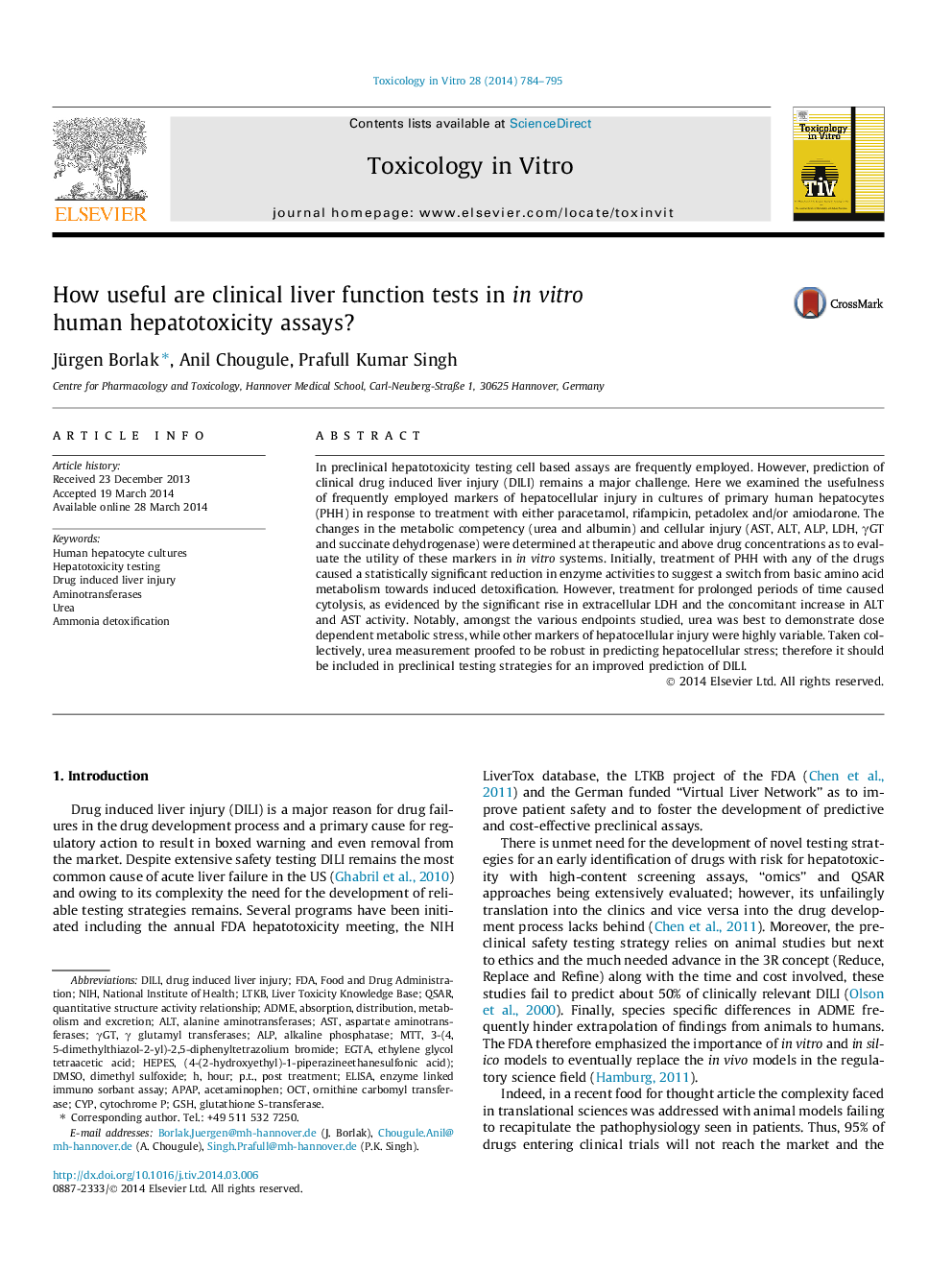| Article ID | Journal | Published Year | Pages | File Type |
|---|---|---|---|---|
| 5862271 | Toxicology in Vitro | 2014 | 12 Pages |
Abstract
In preclinical hepatotoxicity testing cell based assays are frequently employed. However, prediction of clinical drug induced liver injury (DILI) remains a major challenge. Here we examined the usefulness of frequently employed markers of hepatocellular injury in cultures of primary human hepatocytes (PHH) in response to treatment with either paracetamol, rifampicin, petadolex and/or amiodarone. The changes in the metabolic competency (urea and albumin) and cellular injury (AST, ALT, ALP, LDH, γGT and succinate dehydrogenase) were determined at therapeutic and above drug concentrations as to evaluate the utility of these markers in in vitro systems. Initially, treatment of PHH with any of the drugs caused a statistically significant reduction in enzyme activities to suggest a switch from basic amino acid metabolism towards induced detoxification. However, treatment for prolonged periods of time caused cytolysis, as evidenced by the significant rise in extracellular LDH and the concomitant increase in ALT and AST activity. Notably, amongst the various endpoints studied, urea was best to demonstrate dose dependent metabolic stress, while other markers of hepatocellular injury were highly variable. Taken collectively, urea measurement proofed to be robust in predicting hepatocellular stress; therefore it should be included in preclinical testing strategies for an improved prediction of DILI.
Keywords
ALTFDAAmmonia detoxificationγGTNIHAPAPGSHEGTAADMECyPHEPES(4-(2-hydroxyethyl)-1-piperazineethanesulfonic acid)3-(4,5-dimethylthiazol-2-yl)-2,5-diphenyltetrazolium bromideDMSOMTTaspartate aminotransferasesASTalanine aminotransferasesALPAlkaline phosphataseAminotransferasesethylene glycol tetraacetic acidAcetaminophenUreaOctQSARPost treatmentELISAabsorption, distribution, metabolism and excretionDILIDimethyl sulfoxideQuantitative Structure Activity RelationshipFood and Drug AdministrationHourcytochrome PDrug induced liver injuryNational Institute of Healthglutathione S-transferase
Related Topics
Life Sciences
Environmental Science
Health, Toxicology and Mutagenesis
Authors
Jürgen Borlak, Anil Chougule, Prafull Kumar Singh,
